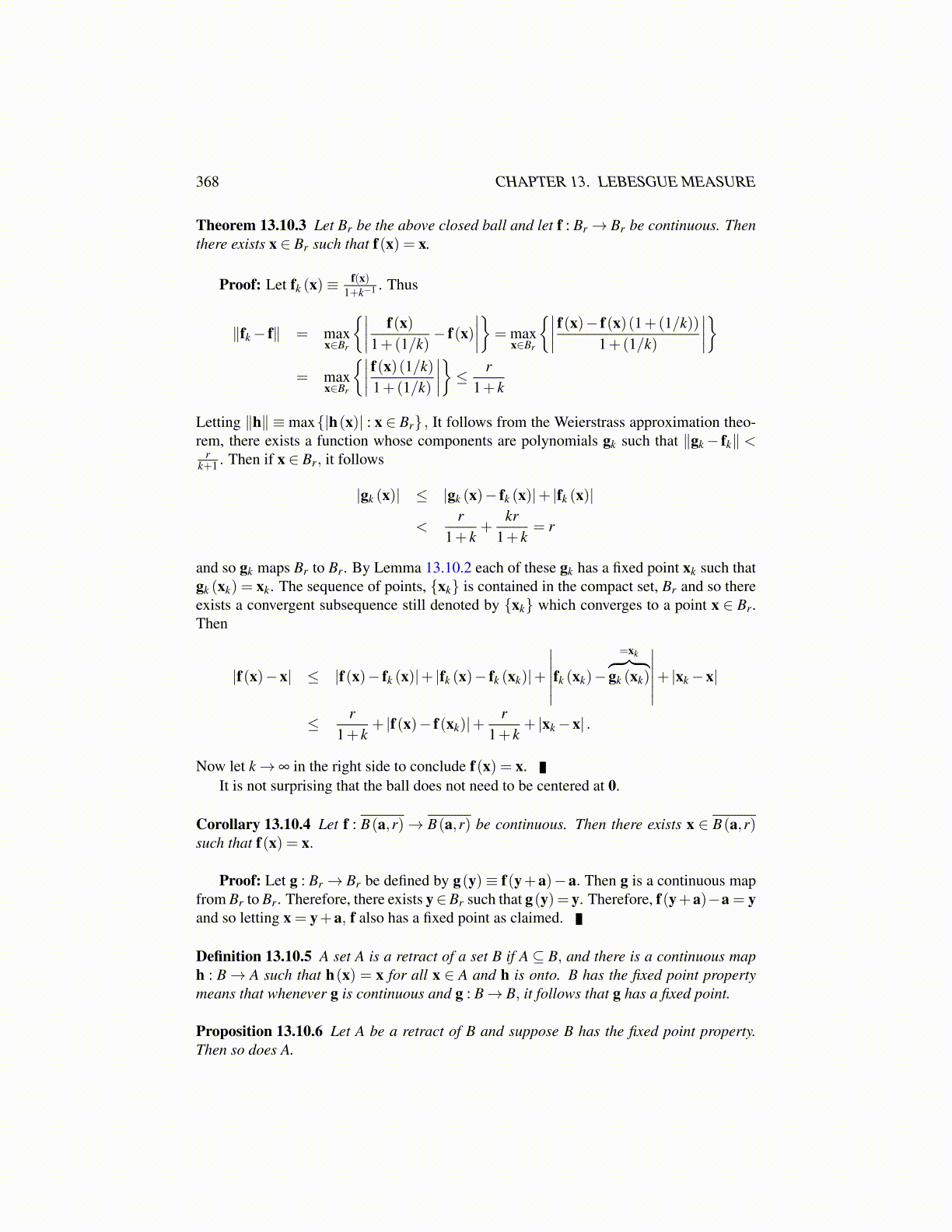
368 CHAPTER 13. LEBESGUE MEASURE
Theorem 13.10.3 Let Br be the above closed ball and let f : Br→ Br be continuous. Thenthere exists x ∈ Br such that f(x) = x.
Proof: Let fk (x)≡ f(x)1+k−1 . Thus
∥fk− f∥ = maxx∈Br
{∣∣∣∣ f(x)1+(1/k)
− f(x)∣∣∣∣}= max
x∈Br
{∣∣∣∣ f(x)− f(x)(1+(1/k))1+(1/k)
∣∣∣∣}= max
x∈Br
{∣∣∣∣ f(x)(1/k)1+(1/k)
∣∣∣∣}≤ r1+ k
Letting ∥h∥ ≡ max{|h(x)| : x ∈ Br} , It follows from the Weierstrass approximation theo-rem, there exists a function whose components are polynomials gk such that ∥gk− fk∥ <
rk+1 . Then if x ∈ Br, it follows
|gk (x)| ≤ |gk (x)− fk (x)|+ |fk (x)|
<r
1+ k+
kr1+ k
= r
and so gk maps Br to Br. By Lemma 13.10.2 each of these gk has a fixed point xk such thatgk (xk) = xk. The sequence of points, {xk} is contained in the compact set, Br and so thereexists a convergent subsequence still denoted by {xk} which converges to a point x ∈ Br.Then
|f(x)−x| ≤ |f(x)− fk (x)|+ |fk (x)− fk (xk)|+
∣∣∣∣∣∣fk (xk)−
=xk︷ ︸︸ ︷gk (xk)
∣∣∣∣∣∣+ |xk−x|
≤ r1+ k
+ |f(x)− f(xk)|+r
1+ k+ |xk−x| .
Now let k→ ∞ in the right side to conclude f(x) = x.It is not surprising that the ball does not need to be centered at 0.
Corollary 13.10.4 Let f : B(a,r)→ B(a,r) be continuous. Then there exists x ∈ B(a,r)such that f(x) = x.
Proof: Let g : Br→ Br be defined by g(y)≡ f(y+a)−a. Then g is a continuous mapfrom Br to Br. Therefore, there exists y∈Br such that g(y)= y. Therefore, f(y+a)−a = yand so letting x = y+a, f also has a fixed point as claimed.
Definition 13.10.5 A set A is a retract of a set B if A ⊆ B, and there is a continuous maph : B→ A such that h(x) = x for all x ∈ A and h is onto. B has the fixed point propertymeans that whenever g is continuous and g : B→ B, it follows that g has a fixed point.
Proposition 13.10.6 Let A be a retract of B and suppose B has the fixed point property.Then so does A.